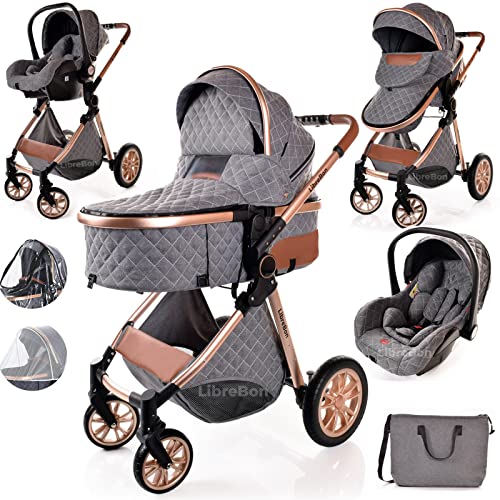Understanding Baby Prams and Pushchairs: A Comprehensive Guide
When it comes to looking after a newborn or an infant, few items are as essential as a dependable baby pram or pushchair. These mobility help offer a safe, comfortable method to carry babies while enabling moms and dads and caregivers the liberty to navigate the world. This post explores the numerous aspects of baby prams and pushchairs, helping parents make informed choices about which item might be best suited for their household's needs.
What Are Baby Prams and Pushchairs?
Baby Prams: These are usually designed for babies and really young babies. They have fully reclining seats that permit a flat position, making them suitable for newborns. Prams often include a big, deep body, offering extra defense and comfort.
Pushchairs: Pushchairs, likewise known as strollers, are more versatile and can normally be adjusted for young children too. They are light-weight, easy to navigate, and typically feature a range of seating positions, consisting of reclined and upright.
| Function | Baby Prams | Pushchairs |
|---|---|---|
| Ideal Age | Newborn to around 6 months | Newborn to 3 years or more |
| Seat Position | Totally reclined | Adjustable (reclined and upright) |
| Weight | Heavier, more robust | Lighter, more compact |
| Folding Mechanism | More intricate folding | Typically simpler folding |
| Maneuverability | Can be less maneuverable | Highly maneuverable |
Secret Features to Consider
When selecting a baby pram or pushchair, potential buyers should think about numerous crucial functions that can influence the functionality and comfort for both the kid and the caretaker.
1. Safety Features
- Five-point Harness: Ensures the baby is firmly strapped in.
- Brakes: Reliable braking systems avoid mishaps.
- Stability: A large base and well-constructed frame improve stability.
2. Comfort
- Padding: Ample padding on the seat ensures comfort.
- Suspension System: Provides a smoother trip on unequal surfaces.
- Canopy: A large, adjustable canopy secures the baby from sun and rain.
3. Portability
- Weight: Lighter models are simpler to raise and bring.
- Folding Mechanism: Easy folding designs permit fast storage and transport.
- Compact Size: A more compact size makes it easier to suit car boots and tight spaces.
4. Versatility
- Convertible Options: Some designs can be changed from a pram to a pushchair.
- Reversible Seat: Allows the baby to deal with the parent or the world, depending on choice.
- Devices: Look for options that can accommodate automobile seats or have a storage basket.
5. Durability
- Product Quality: Invest in higher-end products for longevity.
- Weather Resistance: Water-resistant fabrics guarantee that the pram/pushchair can withstand different climate condition.
Kinds Of Baby Prams and Pushchairs
Several kinds of baby prams and pushchairs meet different function requirements, lining up with moms and dads' specific way of lives.
1. Travel Systems
Travel systems generally combine a vehicle seat and a stroller in one plan, permitting seamless transport from cars and truck to pram or pushchair without disrupting the baby.
2. Umbrella Strollers
Umbrella strollers are lightweight and convenient, designed for simpler maneuverability. They are perfect for fast trips and might do not have some functions found in full-size strollers.
3. All-Terrain Pushchairs
These are perfect for active households who delight in hiking or taking strolls on rugged terrains. They normally feature bigger wheels for stability.
4. Jogging Strollers
Jogging strollers are created for moms and dads who want to combine exercise with childcare. They feature tough frames and fixed front wheels to enhance safety during a run.
The Importance of Choosing the Right Option
Selecting the proper baby pram or pushchair is not simply a matter of preference; it straight affects the safety and convenience of the baby. In addition, the best option can exceptionally influence the way of life of the caretakers.
Benefits:
- Convenience: A well-chosen pram or pushchair makes getaways simpler and more enjoyable.
- Health: Proper support helps in spinal and skeletal development in infants.
- Bonding: Outdoors play a critical role in parent-child bonding.
Frequently Asked Questions (FAQs)
1. At what age can my baby use a pushchair?
The majority of pushchairs are created to accommodate infants as young as 6 months, although some models can be gotten used to safely transport newborns when used with compatible cars and truck seats.
2. How do I keep my baby pram or pushchair?
Routine cleaning is necessary. Clean down the frame and fabric with a moist fabric and moderate soap. Periodically check the wheels and brakes for wear and tear.
3. Can I utilize a baby pram for jogging?
Usually, no. learn here lack the stability and design needed for running. It is safer to utilize a stroller specifically developed for that purpose.
4. How do I select the right size?
Consider how often you will be utilizing the pram/pushchair and where. If space is limited, search for a more compact design. For outside adventures, go with one with larger wheels and good suspension.
Baby prams and pushchairs are vital tools for moms and dads and caretakers, enabling safe and comfortable transportation of babies and young children. By comprehending the various functions, types, and advantages included, caregivers can pick the very best movement aid matched to their needs. Whether it be a sophisticated travel system or a basic umbrella stroller, the best purchase can significantly improve the experience of parenthood, making outings pleasurable and worry-free for both parents and babies alike.

